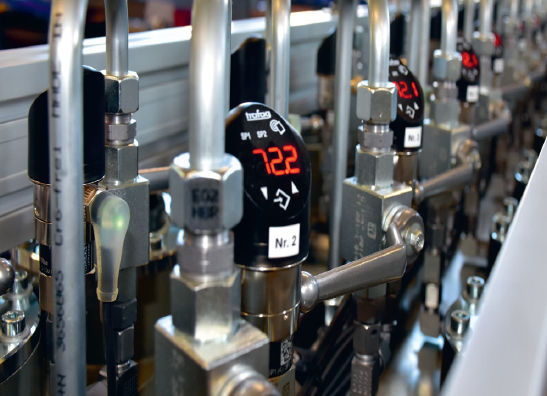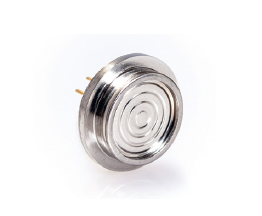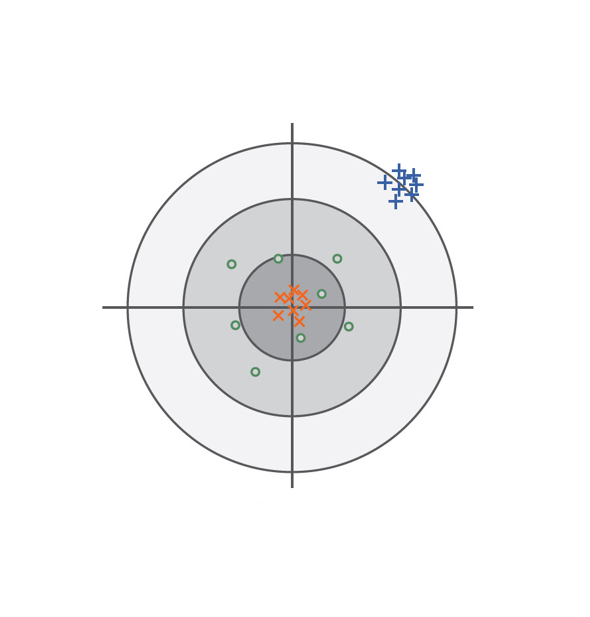Absolute and relative pressure measurement in industrial use
Absolute pressure, relative pressure or differential pressure sensor? This question arises at the beginning of a pressure measurement. This article explains what needs to be taken into account in various areas of application and goes into detail about the different types of pressure measurement, sensor designs and measuring principles.
Various types of pressure indication
Absolute pressure is the pressure relative to zero pressure in an absolute vacuum, i.e. an absolutely empty space. The absolute pressure in the atmosphere is around 1 bar. Differential pressure refers to the pressure difference between two pressures, e.g. two absolute pressures. A special form of differential pressure is relative pressure: Relative pressure is the pressure difference between the absolute pressure of the atmosphere and another absolute pressure value. In certain publications, relative pressure is also called overpressure. At Trafag, only the term relative pressure is used to avoid confusion with the term overpressure, which indicates the overload resistance of a measuring cell.
The atmospheric pressure is around 1 bar. However, it depends strongly on the altitude above sea level and on weather conditions. The standard atmospheric pressure at 15°C at sea level is 1013.25hPa (101.325kPa). At 500m above sea level it is still around 950hPa and at 2,000m above sea level around 780hPa. Barometric sensors are those sensors that are primarily built to measure atmospheric pressure. These sensors measure the absolute pressure in a range of usually approx. 700hPa to approx. 1,200hPa.
Various pressure sensors
In the industrial sector, relative pressure sensors are most commonly used. However, absolute pressure sensors are also used. Sensors for relative pressure measurement are the simplest in design. The liquid or gaseous medium to be measured is applied on the so-called pressure side. On the back side, the atmospheric pressure acts on the membrane of the measuring cell (Figure 2a). On sensors for absolute pressure measurement, the back side is insulated from the atmosphere. If there is an enclosed space on the back side to allow the deformation of the measuring membrane, a vacuum with an absolute pressure of 0bar must prevail in this space (Figure 2b).


In the industrial sector, relative pressure sensors are most commonly used. However, absolute pressure sensors are also used. Sensors for relative pressure measurement are the simplest in design. The liquid or gaseous medium to be measured is applied on the so-called pressure side. On the back side, the atmospheric pressure acts on the membrane of the measuring cell (Figure 2a). On sensors for absolute pressure measurement, the back side is insulated from the atmosphere. If there is an enclosed space on the back side to allow the deformation of the measuring membrane, a vacuum with an absolute pressure of 0bar must prevail in this space (Figure 2b).
Differential pressure sensors are similar in principle to relative pressure sensors. There is also a specific pressure acting on their back side. However, there are additional challenges with regard to the constructive implementation, because the measuring medium on the back side – in contrast to relative pressure sensors – is not (clean) air at around 1 bar. On so-called Wet/Wet differential pressure sensors, any medium can be applied to the back side at any pressure. This must of course be sealed against the measuring bridge structure. Wet/Wet differential pressure sensors are those designs in which any measuring medium can be applied to both sides of the membrane. On Wet/Dry differential pressure sensors, only dry, clean, non-corrosive gas may come into contact with the sensor as the measuring medium on one side – on the back side of the sensor.
Absolute or relative pressure sensor?
Whether an absolute or a relative pressure sensor is to be used depends on several factors. The two essential criteria can be divided into application-specific and device-specific criteria.
Device-specific criteria
Since relative pressure sensors are usually cheaper due to their simpler design – depending on the measuring principle – the question arises whether it is necessary to measure the absolute pressure, or whether the measurement requirement can also be solved by means of relative pressure measurement. For very high measuring ranges, e.g. 400 bar in hydraulic systems, one usually uses relative pressure sensors and, if necessary, adds the desired atmospheric pressure as a constant. At these high measuring pressures, the influence of atmosphere and sea level is so small that the error becomes negligible in relation to the other measurement uncertainties.
Another important aspect is the required measurement accuracy: the more accurate the measurement has to be, the more critical the influence of changes in atmospheric pressure becomes, and the higher the measuring span has to be, so this influence can actually still be neglected. Table 1 shows how large the measuring range must be so that the influence on the measurement result does not exceed a certain error (in percent of the span) in the event of a possible change in the atmospheric pressure with respect to the calculated specification.




Application-specific criteria
While there are still rather general indications and rules for the device-specific criteria as to whether absolute or relative pressure sensors should be used, it is hardly possible to make general recommendations for the application-specific criteria. The following examples therefore show, rather by way of example, some potential criteria that need to be taken into account.
Closed systems: In closed systems such as cooling circuits, the pressure of the medium reacts independently of the ambient pressure. Therefore, sometimes the absolute pressure is measured. However, due to cost reasons, relative pressure transmitters are used. For if all relative pressure sensors measure against the same atmospheric pressure, the atmospheric influence is equalised if only the differences between the individual measuring points are used and not the absolute level of the pressure.
Process parameters: Since the ratio of air to fuel is decisive in many combustion processes, these calculations are usually based on absolute pressure values for the ideal ratio. Therefore, in numerous cases, the absolute pressure is measured when investigating combustion processes. An alternative is to use relative pressure sensors and reference them against a barometric sensor that accurately measures the atmospheric pressure. The disadvantage of this method is that the errors of the relative pressure sensor and the barometric sensor add up to the total measurement error.
Which pressure transmitter to choose?
Since each measuring principle offers slightly different possibilities for absolute and relative pressure measurement, only the most common measuring principles in the industrial environment will be discussed: thin-film-on-steel, thick-film-on-ceramic and piezoresistive sensors.
Thin-film-on-steel sensors: Thin-film-on-steel sensors are used whenever possible due to their superior overload resistance and long-term stability, especially at high temperatures or during pressure peaks. However, due to the design, it is very complex to implement an absolute pressure sensor in thin-film-on-steel. It is therefore only used in applications where either the size (thin-film-on-steel sensors are very compact) or the requirements for long-term stability prevent ceramic or piezoresistive sensors from being used.




Thick-film-on-ceramic sensors: Ceramic sensors can also be built as absolute sensors in a relatively cost-effective way. Due to their principle, their accuracy is somewhat lower than that of thin-film or piezo sensors, but is sufficient for most industrial applications. Therefore, they are very often used as absolute pressure sensors. As relative pressure sensors, they are mainly selected if the medium to be measured is corrosive and the steel membrane could be affected.
Piezoresistive sensors: The semiconductor chips inside piezoresistive sensors have a much higher signal level than the resistors of the thin-film and thick-film sensors. Therefore, piezoresistive sensors achieve a higher accuracy with the respective calibration effort. However, they are more sensitive to higher temperatures and therefore more prone to signal drift, especially in hot environments. This reduces their long-term stability. They are therefore either used as reference pressure sensors and regularly recalibrated, or they are used where a possible signal drift can be accepted without problems in the application. Piezoresistive sensors can also be executed relatively simply as absolute pressure sensors. As already mentioned, in addition to the choice of absolute or relative pressure measurement, many other criteria play a role in the selection of the ideal pressure sensor.


Do you have any questions about absolute and relative pressure measurement?
We'd be glad to help. Please get in touch with us.




